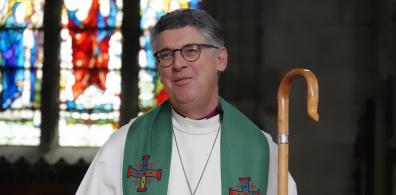 Mark Carter is expanding his role to become diocesan Director of Church Buildings and Net Zero as part of the diocese’s increasing focus on the climate crisis agenda.
Mark Carter is expanding his role to become diocesan Director of Church Buildings and Net Zero as part of the diocese’s increasing focus on the climate crisis agenda.
He will continue to head up the Church Buildings team but will also be leading on the diocesan ambition to become net zero carbon by 2030.
Working alongside Mark in the Church Buildings Team are Church Buildings Officer, Hannah Taylor, Administrator, Kay Shuard and a new Buildings for Mission Officer funded by the national church, Olivia Sparks.
Olivia’s role will enable the team to increase the level of support offered to parishes through working more closely on work such as planning repair and maintenance projects, writing funding bids, and preparing statements of significance and need.
Mark also oversees the new regional net zero partnership running across the dioceses of Worcester, Hereford and Gloucester. This currently includes Programme Manager Lee Westcott, who is focussed on churches and Project Manager Erica Siddall, focussed on clergy housing. It is hoped they will be joined by a third member focussed on schools.
Mark said: “Our team will continue to support parishes in the care of their church buildings, and we are always happy to help any parish who is considering works on the building, have any issues with their buildings or are looking to start sourcing funding. It always makes a big difference if people can speak to us at an early point in their plans. However, the team will also have a key focus on the journey towards net zero and will be able to offer support for all churches who want to reduce their carbon use.”
Mark will be continuing to put together bids for funding from the national church which can then be distributed to parishes. Currently there is minor repairs funding and net zero quick wins funding available to churches.
He continued: “I have loved working with churches in the Diocese over the last seven years and this new role will enable our team to support more churches and our wider mission to safeguard creation in all its abundance. Together we can ensure that our church buildings are fit for the future, able to be used by their communities and that we are taking our environmental responsibilities seriously.”

